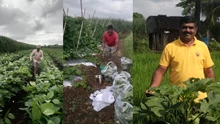
The food industry is evolving. With the climate issue and supply chain disruptions, "controlled-environment agriculture," which includes vertical farming and has been around since the 1970s, is gaining traction as a way to grow healthy food using artificial light, according to The New York Times. Between 2008 and 2015, the cost of LED lights plummeted by as much as 94 percent, allowing growers to move their operations indoors.
According to The New York Times, the CEO of agricultural start-up Plenty Unlimited Arama Kukutai remarked, "It can put production anywhere without considering the climate."
One of the most significant advantages of vertical farming is the amount of space and soil it saves. In an interview with TUM, Senthold Asseng, Professor of Digital Agriculture at the Technical University of Munich (TUM), said, "Crops are grown in spaces ranging in size from small boxes that can be placed in homes or offices to industrial production facilities with several thousand square meters of growing area. On one hectare of land, vertical farming can produce up to 100 layers of crops above one another. This will protect huge areas of agricultural land."
Vertical farming has several advantages, including the use of significantly less water, protection from typical pests due to the inside atmosphere, and the ability to harvest crops multiple times per year.
"Vertical farming allows for multiple crops harvests each year and can contribute significantly to global food security. We can minimize water requirements by up to 90% and eliminate the need for chemical crop protection if we optimize the growth conditions for a crop in a closed system, cut off from the outside world," Asseng told TUM.
Vertical farming is expected to grow from $3.1 billion last year to $9.7 billion by 2026, according to market analysis firm ResearchAndMarkets.com.
One of the biggest drawbacks of vertical farming is that it consumes a lot of energy to power all those grow lights, but it does provide benefits in terms of control.
Asseng told TUM that this has made it unprofitable for crops like grains at the moment, although it is quite plausible to boost the global mean annual per-hectare wheat production by a factor of 6000. I also see a lot of possibilities in terms of producing medicinal and protein crops. Vertical farming allows for perfect control of quality, nutrient content, and flavor. New crop varieties developed specifically for this style of farming show promise in terms of quality.
According to the head of Utah State University's Crop Physiology Laboratory, Bruce Bugbee, tomatoes use 60 percent more electricity than lettuce and strawberries two times more, as reported by The New York Times. "Whether the products can grab a market share will determine the viability of vertical farming. Consumer acceptance will also play a crucial role. It might require some persuasion," Asseng told TUM.












